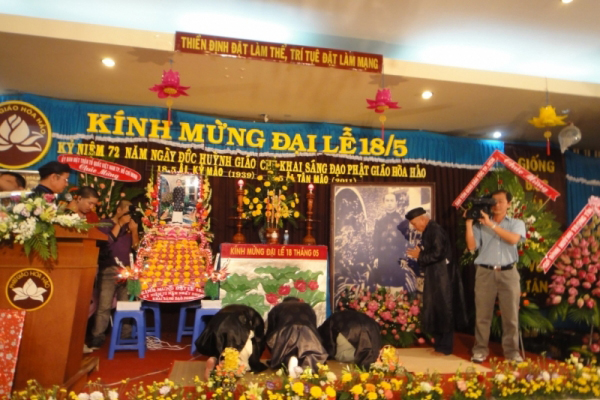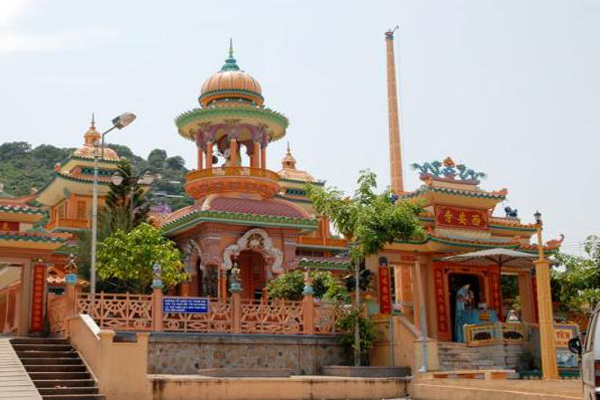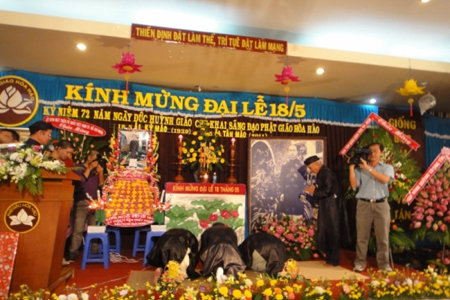In South Vietnam, before the August Revolution (1945), there appeared two new religions: Caodaism (1926) and Hoa Hao Buddhism (1939). Like in the case of Caodaism, the birth of Hoa Hao Buddhism arose from the economic,...
In South Vietnam, before the August Revolution (1945), there appeared two new religions: Caodaism (1926) and Hoa Hao Buddhism (1939). Like in the case of Caodaism, the birth of Hoa Hao Buddhism arose from the economic, political, social and ideological conditions of South Vietnam during the period from the end of the World War I (1918) to the beginning of the August Revolution (1945).
As mentioned in the chapter on Caodaism, before the August Revolution, French colonists reinforced their colonial policy in Vietnam. They also applied savage measures to suppress patriotic movements throughout the country, especially in South Vietnam. As a result, the local people, especially farmers, had to live in misery; therefore, many of them turned to religions for spiritual shelter. However, the contemporary religions, including Buddhism, were gradually falling into decline, creating a gap in the spiritual world. These were some of the conditions that gave rise to new religions in South Vietnam, including Hoa Hao Buddhism.
Particularly, the birth of Hoa Hao Buddhism was closely related to the typical features of Buddhism, especially Mahayana Buddhism. Buddhism is a flexible religious practice that is based on the spirit of "depending on one's predestined affinity for enlightenment." It also reflects tolerance in its ability to coexist with local religions, beliefs, customs and practices, as well as some of their elements. This has led to it being divided into many sects during its development, some of which are far different from traditional Buddhism.

Hoa Hao Buddhism was a continuation and development of Buu Son Ky Huong Buddhism, which was created in late nineteenth century by the Venerable Doan Minh Huyen (1807- 1856). It was actually a branch of the localized Rinzai school - one of the three sects of Zen in Japanese Buddhism. He was born in 1807 in Tong Son, An Dinh District (in present-day Dong Thap Province). When he was young, he traveled a lot. At the age of 43, he called himself Khung Dien (which means "crazy") and made up prescriptions to cure people. He stayed and practiced the religion at Dao Kien's temple in Cho Moi (present-day An Giang). There, he healed the sick and gained people's trust by saying things of a prophetic nature. The government at that time feared that he was founding a secret society and therefore sent him to the Tay An Pagoda in Chau Doc. There, he simultaneously practiced the religion and instructed his followers and disciples to reclaim virgin soil, set up field camps and build pagodas in many places, especially in the vicinity of Bay Nui, Chau Doc (also known as That Son). The Buddhist sect that he practiced was named Buu Son Ky Huong, and his followers called him Tay An Buddhist Teacher. The thought of Buu Son Ky Huong is summarized in the Four Great Debts of Gratitude (Tu dai trong an), which reminds its followers to be grateful to Buddha, their motherland, their parents and their teachers. This thought was expressed by Doan Minh Huyen in a book titled Sam truyen Phat thay Tay An (Tay An Buddhist Teacher's Oracles). It consisted of 402 lines of poetry recorded by a Buddhist follower in 1909 and was compiled by Nguyen Van Hau in 1975. Many of Doan Minh Huyen's disciples later became famous, including Quan Thanh (or Tran Van Thanh), Chai Lich (or Nguyen Trung Truc), Cu Da (or Nguyen Van Da), Dinh Tay (or Bui Dinh Tay), Dao Ot, Dao Den (or Phat Trum) and Ngo Loi. Ngo Loi (1831-1890), also known as Ngo Vien, was the person who followed Doan Minh Huyen's school of thought and formed the sect called "Tu An Hieu Nghia" (Four Debts of Gratitude), which was the direct foundation of Hoa Hao Buddhism.

Regarding the birth of Hoa Hao Buddhism, it is also necessary to mention the recession (or more exactly the lost of prestige) of Buddhism and Buddhist promotional activities that took place in the 1920s and 1930s in South Vietnam. Subsequently, the birth of Hoa Hao Buddhism is considered one of the Buddhism- promoting efforts in the South. This is apparent in the simple
ritual rules, monastic ways and organizational structure of Hoa Hao Buddhism as a way to overcome the decline of monastic groups and remove superstitious customs within Buddhism at that time.



